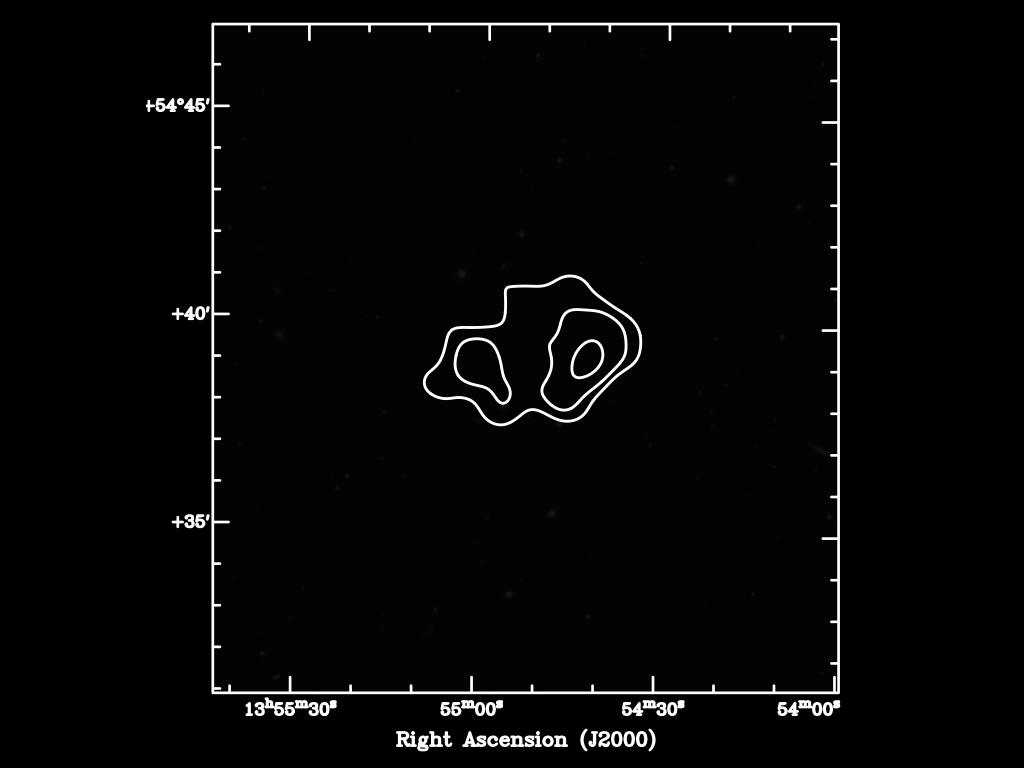Daily Image
17-07-2013Is GBT1355+5439 a dark galaxy?
| Submitter: | Tom Oosterloo |
| Description: | A key feature of galaxy formation is that progressively smaller galaxies find it harder and harder to convert their gas into stars. This leads to the question whether there is a minimum galaxy mass below which no gas is converted into stars: could there be starless objects ('dark galaxies') that are only detectable through their cold gas. Such dark galaxies have become some kind of Holy Grail for HI astronomers; many Quests have been undertaken to find one, but so far no convincing case has been discovered. This may change. Last year, a mysterious gas cloud (called GBT1355+5439) with absolutely no stellar counterpart was found near the galaxy M101 by Chris Mihos and coworkers using data taken with the Greenbank telescope. GBT1355+5439 immediately caught the attention of the HI community, because you never know... Tom Oosterloo, George Heald and Erwin de Blok used the WSRT to have a closer look to see whether this cloud could be a dark galaxy. The outcome turned out to be more interesting than expected. The conclusion is that it is very unlikely that GBT1355+5439 is a dark companion galaxy of M101. It would be loo large and too massive to be consistent with the theory of dark galaxies. However, it is not inconceivable that instead it is a (much less distant and much smaller) dark galaxy companion of our own Milky Way that happens, by coincidence, to be in the same part of sky as M101, but that has nothing to do with that galaxy. GBT1355+5439 seems to have similar properties as the objects from the population of small HI clouds recently discovered with Arecibo by, among others, Betsey Adams (who will join ASTRON after the summer as a postdoc) and that are interesting candidates for being dark (or almost dark) galaxies in the vicinity of the Milky Way. It is quite possible that GBT1355+5439 belongs to this group of objects; it would be the first one to be imaged in HI and to be studied in detail. All this, and more, is written down in a Letter that recently appeared in A&A: http://arxiv.org/abs/1306.6148 The figure shows the HI contours of GBT1355+5439 on top of its optical image |
| Copyright: | Astron |
| Tweet |  |
